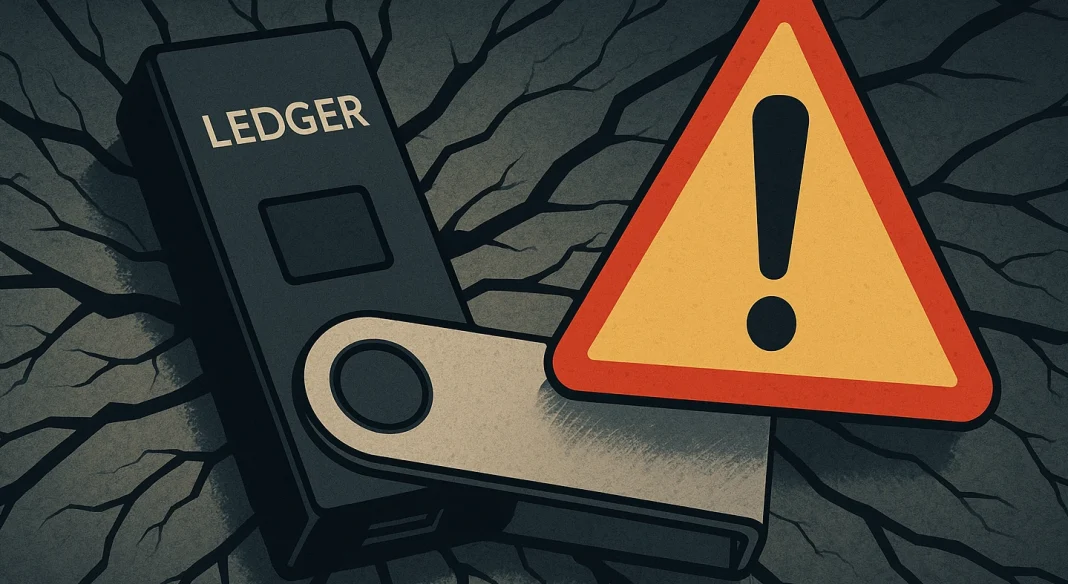Ledger is rolling out a new offline key recovery feature for its latest devices. Sounds like a lifesaver, right?
Well, hold on to your hats, because this move has the crypto world buzzing, and not all of it is good news.
Safety net for the users?
Ledger’s new “Recovery Key” lets users access their private keys offline through a smart card that stores a copy of the master secret.
This master secret is what generates your Secret Recovery Phrase, the holy grail of crypto access.
The card connects to Ledger’s hardware wallets via NFC, and it’s packed with a tamper-resistant chip, a secure operating system, and factory-level protections to keep those secrets locked tight.
Now, Ledger’s pitching this as a way to make self-custody easier for everyone. Ian Rogers, their Chief Experience Officer, puts it straight, and says too many people are leaving their crypto assets on exchanges or flimsy software wallets.
With this new Recovery Key, plus their existing Ledger Recover service and the classic 24-word phrase, they’re offering a safety net for every kind of user.
Bad idea?
But here’s where the plot thickens, because as you may know, this isn’t Ledger’s first rodeo with recovery options.
They’re answering complaints from users who got locked out of their devices, painful stories, like losing your keys and being stuck outside your own house.
Yet, giving users a secondary PIN and a physical recovery card? That opens a can of worms.
Security experts and users alike are raising eyebrows. What if that secondary PIN gets abused? What if someone snatches your Recovery Key card?
Remember, Ledger wallet owners have been targeted before, sometimes with threats or worse, to force them to unlock their devices.
And let’s not forget the dark tales of kidnappings linked to crypto holdings. Linking recovery to a physical object or a secondary PIN might just hand the bad guys another tool.
New features are good features?
Ledger’s new feature is debuting on their touchscreen models, the Flex and Stax. You can even create multiple spare keys, generated online but protected.
Sounds convenient, but convenience and security don’t always walk hand in hand. And Ledger isn’t just stopping there.
They’ve also launched Ledger Transaction Check, a software upgrade to sniff out shady transactions, especially for Ethereum users.
Transaction Check just hit Ledger Live: meet real-time threat detection for your Ethereum.
Every time you want to sign a transaction, it scans to flag potential threats.
Powered by the industry's top risk analysis engines: @blockaid_, @CyversAlerts, and @TenderlyApp.
Tracked… pic.twitter.com/wur5EF7rPF
— Ledger (@Ledger) June 23, 2025
Smart move, considering even big players like Bybit, reportedly using Ledger Nano devices, fell victim to a $1.4 billion multisig wallet hack. Hardware security is strong, but it’s no silver bullet.
Disclosure:This article does not contain investment advice or recommendations. Every investment and trading move involves risk, and readers should conduct their own research when making a decision.
Kriptoworld.com accepts no liability for any errors in the articles or for any financial loss resulting from incorrect information.


